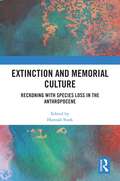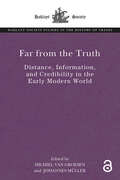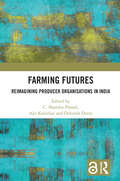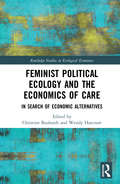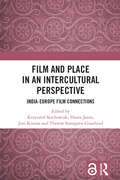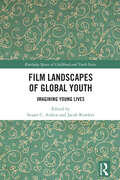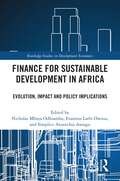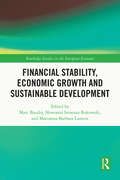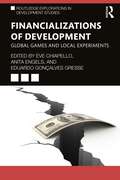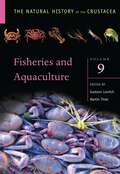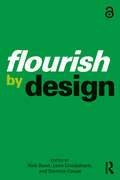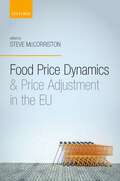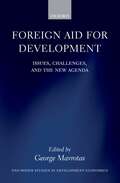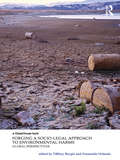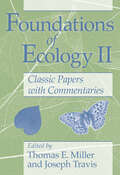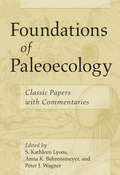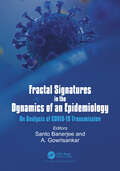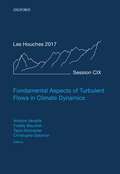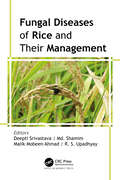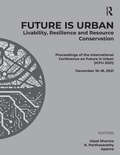- Table View
- List View
Extinction and Memorial Culture: Reckoning with Species Loss in the Anthropocene
This book considers how we encounter and make meaning from extinction in diverse settings and cultures. It brings together an international and interdisciplinary range of scholars to consider how extinction is memorialised in museums and cultural institutions, through monuments, in literature and art, through public acts of ritual and protest, and in everyday practices. In an era in which species are becoming extinct at an unprecedented rate, we must find new ways to engage critically, creatively, and courageously with species loss. Extinction and Memorial Culture: Reckoning with Species Loss in the Anthropocene develops the conceptual tools to think in complex ways about extinctions and their aftermath, along with providing new insights into commemorating and mourning more-than-human lives. This book will be of great interest to students and scholars of the environmental humanities, extinction studies, memorial culture, and the Anthropocene.
FABRIC[ated]: Fabric Innovation and Material Responsibility in Architecture
FABRIC[ated] examines fabric as a catalyst for innovation, reflection, change and transformation in architecture. This book explores the ways in which research and development of fabric can, and historically has, influenced and revolutionized architecture, teaching and design. Responsive, flexible, impermanent, fluid and adaptive—fabric interacts with, and influences architecture, offering innovative solutions and increased material responsibility. Foundation and theory chapters establish clear precedent and futures for fabric’s position in architectural discourse. The case study section examines 14 international projects through three different threads: Veiling, Compression and Tension. Case studies include a diverse range of projects from the HiLo unit at Nest and CAST’s fabric formed concrete projects to a discussion of the impact of fabric on SO-IL and Kennedy Violich Architect’s professional work, demonstrating new and fresh methods for addressing sustainability and social justice through the use of fabric in architecture. Through the work of the many authors of this book, we see fabric as drape, skin, veil, mold, concept and inspiration. Fabric, in its broadest definition, is an important and innovative material in the development of socially conscious architecture. Offering readers pedagogical and practical models for international projects highlighting fabric’s use in architecture, this book will appeal to the novice and the expert, architecture students and practitioners alike.
Factors affecting climate (Large Print)
There are two diagrams of the Earth on this page; one is at the top of the page and the other at the bottom. Each has a dashed line image border. There is a locator dot shown, which will be at the top left of the page when the image is the right way up. Winter: In the top diagram, to the left of the page, there is a textured disc representing the Earth, with a ring of another texture showing the atmosphere surrounding it. On the top right part of the Earth there are two heavy lines showing the area of the Earth's surface heated by the sun's rays, which are represented by two textured bars extending to the right. This shows how, in northerly areas in winter, the sun's rays are spread out more and have to travel further through the atmosphere. These factors, together with shorter winter days and increased reflection of the sun's energy back into space, all have the effect of reducing the amount of energy available for heating the surface of the Earth. A heavy dashed line showing the Equator goes across at an angle halfway up the disc. The Earth's axis is shown at its top and bottom by short heavy lines. To the right of these are four descriptive labels. Summre: In the diagram at the bottom of the page there are descriptive labels to the left. To the right of the page, there is a textured disc representing the Earth, with a ring of another texture showing the atmosphere surrounding it. On the top left part of the Earth there are two heavy lines showing the area of the Earth's surface heated by the sun's rays, which are represented by two textured bars extending to the left. This shows how, in northerly areas in summer, the sun's rays are spread out less and have to travel a shorter distance through the atmosphere. These factors, together with longer summer days and decreased reflection of the sun's energy back into space, all have the effect of increasing the amount of energy available for heating the surface of the Earth. A heavy dashed line showing the Equator goes across at an angle halfway up the disc. The Earth's axis is shown at its top and bottom by short heavy lines.
Factors affecting climate (UEB Contracted)
There are two diagrams of the Earth on this page; one is at the top of the page and the other at the bottom. Each has a dashed line image border. There is a locator dot shown, which will be at the top left of the page when the image is the right way up. Winter: In the top diagram, to the left of the page, there is a textured disc representing the Earth, with a ring of another texture showing the atmosphere surrounding it. On the top right part of the Earth there are two heavy lines showing the area of the Earth's surface heated by the sun's rays, which are represented by two textured bars extending to the right. This shows how, in northerly areas in winter, the sun's rays are spread out more and have to travel further through the atmosphere. These factors, together with shorter winter days and increased reflection of the sun's energy back into space, all have the effect of reducing the amount of energy available for heating the surface of the Earth. A heavy dashed line showing the Equator goes across at an angle halfway up the disc. The Earth's axis is shown at its top and bottom by short heavy lines. To the right of these are four descriptive labels. Summre: In the diagram at the bottom of the page there are descriptive labels to the left. To the right of the page, there is a textured disc representing the Earth, with a ring of another texture showing the atmosphere surrounding it. On the top left part of the Earth there are two heavy lines showing the area of the Earth's surface heated by the sun's rays, which are represented by two textured bars extending to the left. This shows how, in northerly areas in summer, the sun's rays are spread out less and have to travel a shorter distance through the atmosphere. These factors, together with longer summer days and decreased reflection of the sun's energy back into space, all have the effect of increasing the amount of energy available for heating the surface of the Earth. A heavy dashed line showing the Equator goes across at an angle halfway up the disc. The Earth's axis is shown at its top and bottom by short heavy lines.
Factors affecting climate (UEB Uncontracted)
There are two diagrams of the Earth on this page; one is at the top of the page and the other at the bottom. Each has a dashed line image border. There is a locator dot shown, which will be at the top left of the page when the image is the right way up. Winter: In the top diagram, to the left of the page, there is a textured disc representing the Earth, with a ring of another texture showing the atmosphere surrounding it. On the top right part of the Earth there are two heavy lines showing the area of the Earth's surface heated by the sun's rays, which are represented by two textured bars extending to the right. This shows how, in northerly areas in winter, the sun's rays are spread out more and have to travel further through the atmosphere. These factors, together with shorter winter days and increased reflection of the sun's energy back into space, all have the effect of reducing the amount of energy available for heating the surface of the Earth. A heavy dashed line showing the Equator goes across at an angle halfway up the disc. The Earth's axis is shown at its top and bottom by short heavy lines. To the right of these are four descriptive labels. Summre: In the diagram at the bottom of the page there are descriptive labels to the left. To the right of the page, there is a textured disc representing the Earth, with a ring of another texture showing the atmosphere surrounding it. On the top left part of the Earth there are two heavy lines showing the area of the Earth's surface heated by the sun's rays, which are represented by two textured bars extending to the left. This shows how, in northerly areas in summer, the sun's rays are spread out less and have to travel a shorter distance through the atmosphere. These factors, together with longer summer days and decreased reflection of the sun's energy back into space, all have the effect of increasing the amount of energy available for heating the surface of the Earth. A heavy dashed line showing the Equator goes across at an angle halfway up the disc. The Earth's axis is shown at its top and bottom by short heavy lines.
Far From the Truth: Distance, Information, and Credibility in the Early Modern World
Information and knowledge were essential tools of early modern Europe’s global ambitions. This volume addresses a key concern that emerged as the competition for geopolitical influence increased: how could information from afar be trusted when there was no obvious strategy for verification? How did notions of doubt develop in relation to intercultural encounters? Who were those in the position to use misinformation in their favour, and how did this affect trust? How, in other words, did distance affect credibility, and which intellectual and epistemological strategies did early modern Europe devise to cope with this problem? The movement of information, and its transformations in the process of gathering, ordering, and disseminating, makes it necessary to employ both a global and a local perspective in order to understand its significance. The rise of print, leading to various new forms of mediation, played a crucial role everywhere, inspiring theories of modernization in which media served as agents of new connections and, eventually, of globalization. Paradoxically, during the entire period between 1500 and 1800, the demise of distance through various strategies of verification coincided with constructions of otherness that emphasized the cultural and geographical difference between Europe and the worlds it encountered. Ten leading scholars of the early modern world address the relationship between distance, information, and credibility from a variety of perspectives. This volume will be an essential companion to those interested in the history of knowledge and early modern encounters, as well as specialists in the history of empire and print culture.
Farming Futures: Reimagining Producer Organisations in India
This book studies the management challenges and possibilities in sustaining farmer producer organisations (FPOs). It goes beyond the conventional metrics of cost-benefit analysis by drawing on 15 case studies of diverse FPOs spread across India to fill a significant knowledge-practice gap in the domain of producer collectives. The book explores issues of ownership and governance, studies the empirical basis for policy decisions on FPOs, and provides actionable insights and knowledge, keeping in mind the complexity of the institutional design of an FPO. It also discusses the envisioned role of civil society organisations in supporting FPOs and looks at the kind of institutional innovations that are needed to create a cohesive ecosystem for FPOs. A unique collaborative project jointly authored by academics and development practitioners, the book will be of use to students and researchers of agricultural economics, environment and business, agricultural development, environmental economics, rural studies, entrepreneurship, and South Asian studies. It will also be of interest to development professionals, civil society organisations, and policymakers.
Fashion Aesthetics and Ethics: Past and Present
How are aesthetics and ethics related to the practical realities of the global fashion industry? Both have played an important role in academic fashion studies to this point, but they are most often discussed in the context of abstract phenomena such as modernity and capitalism, or identity issues such as sexuality, class and gender. The essays in this volume strive instead to show how the realities of the global fashion industry have important and pertinent aesthetic and ethical consequences.This collection provides critical and philosophical analysis of the interplay of aesthetics and ethics within the global fashion industry. Characterized by an increasingly fast spinning production, the industry is highly exploitative in terms of environment and labor force: underpaid textile workers, retailers working under brutal competition from the mass-merchandise discounters, young designers, seamstresses and curators often working for free, and a vast body of aspiring models. In addition, fashion-related aesthetic ideals are becoming more influential than ever in directing consumers in their social and personal identification processes and bodily practices with sometimes fatal consequences.Covering a wide range of subjects such as fashion's highly problematic production and consumption practices, the possibility of producing and consuming fashion ethically, fashion's intimate connection with nature and technology, Fashion Aesthetics and Ethics highlights the powerful aesthetical presence of fashion in relation to its ethical premises and often problematic outcomes.
Feminist Political Ecology and the Economics of Care: In Search of Economic Alternatives (Routledge Studies in Ecological Economics)
This book envisages a different form of our economies where care work and care-full relationships are central to social and cultural life. It sets out a feminist vision of a caring economy and asks what needs to change economically and ecologically in our conceptual approaches and our daily lives as we learn to care for each other and non-human others. Bringing together authors from 11 countries (also representing institutions from 8 countries), this edited collection sets out the challenges for gender aware economies based on an ethics of care for people and the environment in an original and engaging way. The book aims to break down the assumed inseparability of economic growth and social prosperity, and natural resource exploitation, while not romanticising social-material relations to nature. The authors explore diverse understandings of care through a range of analytical approaches, contexts and case studies and pays particular attention to the complicated nexus between re/productivity, nature, womanhood and care. It includes strong contributions on community economies, everyday practices of care, the politics of place and care of non-human others, as well as an engagement on concepts such as wealth, sustainability, food sovereignty, body politics, naturecultures and technoscience. Feminist Political Ecology and the Economics of Care is aimed at all those interested in what feminist theory and practice brings to today’s major political economic and environmental debates around sustainability, alternatives to economic development and gender power relations.
Film and Place in an Intercultural Perspective: India-Europe Film Connections
The book offers an interdisciplinary overview of the film and place relationship from an intercultural perspective. It explores the complex domain of place and space in cinema and the film industry's role in establishing cultural connections and economic cooperation between India and Europe.With contributions from leading international scholars, various case studies scrutinise European and Indian contexts, exploring both the established and emerging locations. The book extends the dominantly Britain-oriented focus on India’s cinema presence in Europe to European countries such as Italy, Switzerland, Poland, Slovenia, Finland, and Sweden, where the Indian film industry progressively expands its presence. The chapters of this book look at Indian film production in Europe as a cultural bridge between India and Europe, fostering mutual understanding of the culture and society of the two regions.This interdisciplinary book will be of interest to researchers in film studies, cultural anthropology, cultural geography, tourism, economics, sociology, and cultural studies. It will also be interest to practitioners working in local authorities, destination management, tourism, and creative business, all of whom see the value of film production in attracting visitors, investment, and creating new networks with local economic actors. The book offers much-needed data and tools to translate their professional goals and potentials into effective regional strategies and activities.
Film Landscapes of Global Youth: Imagining Young Lives (Routledge Spaces of Childhood and Youth Series)
This book explores the dynamic landscapes of global youth through spatially grounded chapters focused on film and media. It is a collection of incredible works concerning children and young people in, out, and through media as well as an examination of what is possible for the future of research within the intersections of geography, film theory, and children’s studies.It contains contributions from leading academics from anthropology, sociology, philosophy, art, film and media studies, women and gender studies, Indigenous studies, education, and geography, with chapters focused on a spatial area and the representations and relationships of children in that area through film and media. The insights presented also provide a unique and eclectic perspective on the current state of children’s research in relation to the ever-changing media landscape of the 21st century. Film Landscapes of Global Youth approaches the subjects of children and young people in film and media in a way that is not bound by genre, format, medium, or the on-/off-screen binary. Each chapter offers an insightful look at the relationships and portrayals of children and young people in relation to a specific country, culture, or geographic feature.This book is a must-read for anyone interested in the intersections between geography, young lives, and the power of film, television, social media, content creation, and more.
Finance for Sustainable Development in Africa: Evolution, Impact and Policy Implications (Routledge Studies in Development Economics)
Although a number of selected African countries have made efforts to implement various financial sector reforms, many countries have not fully implemented the requisite reforms required for sustainable development. Instead, they have focused mainly on bank-based financial reforms, thereby neglecting market-based financial reforms. This study provides a one-stop shop for understanding the history and evolution of the financial sector in Africa with a special focus on the sub-Saharan region where the financial system in many countries is still at a relatively nascent stage. The analysis is extensive and robust, and starts from financial repression to financial liberalisation (both internal and external), and its role in sustainable development and poverty alleviation. The book covers a range of important research issues pertaining to financial development in selectede African countries, including interest rate and exchange rate reforms, the dynamics of bank-based and market-based financial development; the role of the informal financial sector in sustainable development; the finance-growth nexus; bank-based versus market-based financial sectors in Africa; financial development and information and communication technology; and financial development and gender equality, among other topics. The book also considers the relationship between the COVID-19 global pandemic and financial development, and concludes by presenting a forecast of the future trends of financial and sustainable development on the African continent in general and sub-Saharfan Africa in particular. The chapters are authored by prominent scholars and researchers in the field of finance and banking, applied econometrics and development economics, with a deep understanding and knowledge of financial development and the local situations in African countries. This book provides crucial reference material for academics, researchers, policymakers and students of all levels and is a must-read for anyone wishing to understand the nature of finance and sustainable development in Africa in relation to the rest of the world. It covers African countries, but with more emphasis on the sub-Saharan African region where the financial systems in many of the countries are still relatively underdeveloped.
Financial Stability, Economic Growth and Sustainable Development (Routledge Studies in the European Economy)
Following multiple global crises, there is an urgent need to review our economic and financial paradigms to improve outcomes for the three pillars of sustainable development: economic, social, and environmental. In response, various strands of new economic thinking have emerged such as degrowth, the collaborative economy, solidarity economy, sharing economy and social entrepreneurship. This book explores the various economic and financial dimensions of sustainable development drawing on new and existing theories.This comprehensive book is divided into four sections, each presenting the results of a team of international researchers, tackling the issue from a global, macroeconomic, and microeconomic approach. The first part examines the determinants of sustainable development in the global economy, while the second looks at enterprise in a sustainable world. The third section analyses the financial markets and the fourth addresses economic policy and sustainable development. A wide array of sustainability concerns are discussed in-depth, from analysing changes in environmental social, and governance reporting and assessing their impact on the information systems and reporting of economic entities; exploring the transition to 'Industry 5.0', and how technological innovation can be deployed to support a better fit and 'win-win' interaction between industry and society, shifting focus from economic and technological factors to important environmental and social dimensions.The monograph is an invaluable resource for scholars, researchers, and students of applied, development, growth, resource, and welfare economics. The policy recommendations will be of benefit to policymakers concerned with issues of sustainable development generally and the Sustainable Development Goals specifically.
Financializations of Development: Global Games and Local Experiments (Routledge Explorations in Development Studies)
Financializations of Development brings together cutting-edge perspectives on socio-political, socio-historical and institutional analyses of the evolving multiple and intertwined financialization processes of developmental institutions, programs and policies. In recent years, the development landscape has seen a radical transformation in the partaking actors, which have moved beyond just multilateral or bilateral public development banks and aid agencies. The issue of financing for sustainable development is now at the top of the agenda for multilateral development actors. Increasingly, development institutions aim to include private actors and to lever in private money to support development projects. Drawing on case studies conducted in Africa, Asia, Europe and Latin America, this book examines the ways in which these private finance actors are enrolled and associated with the conception and implementation of development policies. Beginning with a focus on global actors and private foundations, this book considers the ways in which development funding is raised, managed and distributed, as well as debates at the center of global forums where financialized policies and solutions for development are conceived or discussed. The book assembles empirical research on development programs and demonstrates the social consequences of the financializations of development to the people on the ground. Highlighting the plurality of processes and outcomes of modern-day relations, tools, actors and practices in financing development around the world, this book is key reading for advanced students, researchers and practitioners in all areas of finance, development and sustainability.
Fisheries and Aquaculture: Volume 9 (The Natural History of the Crustacea)
This is the ninth volume of ten in the The Natural History of the Crustacea Series. The chapters in this volume synthesize the diverse topics in fisheries and aquaculture. In the first part of the book, chapters explore worldwide crustacean fisheries. This section comes to a conclusion with two chapters on harvested crustaceans that are usually not within the focus of the mainstream fisheries research, possibly because they are caught by local fishing communities in small-scale operations and sold locally as subsistence activity. In the second part of the book, the authors explore the variety of cultured crustacean species, like shrimps, prawns, lobsters, and crabs. Chapters in the third part of the volume focus on important challenges and opportunities, including diseases and parasitism, the use of crustacean as bioindicators, and their role in biotechnology.
Flourish by Design
Flourish by Design brings together a range of established and emerging voices in design research for a collection that provides original provocations on topics of global significance. It is an insightful guide to original theory and practice concerning how we can design for a better tomorrow. Featuring contributors from a diverse array of backgrounds and professions, this edited book explores the difference that design and design research can make for people, organisations, and the planet to prosper now and in the future. It offers a range of ideas and techniques through practical examples and ongoing projects showing how applied design research can respond to global challenges. Covering topics as diverse as artificial intelligence, bio-inspired materials, more-than-human design, sustainability, and urban acupuncture, it shares interdisciplinary and transdisciplinary design research not just to demonstrate what could be plausible in the near future but also to explain why it might be preferable. By sharing these despatches, this collection represents the very best of what design research can do, explaining how and why. This book is intended for a wide audience of professionals, scholars, and students in design, architecture, and public policy, as well as anyone who has an interest in how we design the world and, in turn, it designs us.
Food Price Dynamics and Price Adjustment in the EU
This book addresses the important issue of food prices across EU Member States. Although recent attention has focused on events in world commodity markets following the spikes in world prices in 2007-2008 and 2011, there has been comparatively little attention addressing food price dynamics at the retail level. This volume addresses the characteristics of retail food price behaviour and the nature and drivers of price transmission across the EU. There are several inter-related features of the research reported here. First, the volume reports the characteristics of retail food inflation across the EU and the extent to which it differs from non-food inflation. Second, given the different experience of food inflation across EU Member States, it details the process of price transmission as shocks from upstream and world markets are passed through the food sector to the retail stage. Third, it addresses how the extent and nature of price transmission is determined by various aspects of competition throughout the domestic food sector and how the nature of vertical contracting between stages can determine the price transmission process. Finally, it outlines the potential of high-frequency, product-specific scanner data to address price dynamics and adjustment issues and how scanner data can also be used to measure food price inflation. The book will be of interest to researchers on price transmission and competition issues in the EU and, given the wider interest on these issues coupled with the novel use of scanner data, to researchers further afield. The contributions will also be of interest to policymakers and stakeholders as they seek to make sense of, and to address, regulation issues as they relate to the food sector.
Foreign Aid for Development: Issues, Challenges, and the New Agenda (WIDER Studies in Development Economics)
Foreign aid is one of the few topics in the development discourse with such an uninterrupted, yet volatile history in terms of interest and attention from academics, policymakers, and practitioners alike. Does aid work in promoting growth and reducing poverty in the developing world? Will a new 'big push' approach accelerate progress towards the Millennium Development Goals or will another opportunity be missed? Can the lessons of almost half a century of aid giving be learnt? These are truly important questions in view of the emerging new landscape in foreign aid and recent developments related to the global financial crisis, which are expected to have far reaching implications for both donors and recipients engaged in this area. Against this shifting aid landscape, there is a pressing need to evaluate progress to date and shed new light on emerging issues and agendas. This volume brings together leading aid experts to review the progress achieved so far, identify the challenges ahead, and discuss the emerging policy agenda in foreign aid. A central conclusion of this important and timely volume is that, since development aid remains crucial for many developing countries, a huge effort is needed from both donors and aid recipients to overcome the inefficiencies and make aid work better for poor people. After all, as global citizens, we have a moral obligation to do the best we can to lift people out of poverty in the developing world. The findings of this book will be of considerable interest to professionals and policymakers engaged in policy reforms in foreign aid, and provide an essential one-stop reference for students of development, international finance, and economics.
Forging a Socio-Legal Approach to Environmental Harms: Global Perspectives (Law, Justice and Ecology)
Environmental harms exert a significant toll and pose substantial economic costs on societies around the world. Although such harms have been studied from both legal and social science perspectives, these disciplinary-specific approaches are not, on their own, fully able to address the complexity of these environmental challenges. Many legal approaches, for example, are limited by their inattention to the motivations behind environmental offences, whereas many social science approaches are hindered by an insufficient grounding in current legislative frameworks. This edited collection constitutes a pioneering attempt to overcome these limitations by uniting legal and social science perspectives. Together, the book’s contributors forge an innovative socio-legal approach to more effectively respond to, and to prevent, environmental harms around the world. Integrating theoretical and empirical work, the book presents carefully selected illustrations of how legal and social science scholarship can be brought together to improve policies. The various chapters examine how a socio-legal approach can ultimately lead to a more comprehensive understanding of environmental harms, as well as to innovative and effective responses to such environmental offences.
Foundations of Ecology II: Classic Papers with Commentaries
The classic papers that laid the foundations of modern ecology alongside commentaries by noted ecologists. The period of 1970 to 1995 was a time of tremendous change in all areas of ecology—from an increased rigor for experimental design and analysis to the reevaluation of paradigms, new models for understanding, and theoretical advances. Edited by ecologists Thomas E. Miller and Joseph Travis, Foundations of Ecology II includes facsimiles of forty-six papers from this period alongside expert commentaries that discuss a total of fifty-three key studies, addressing topics of diversity, predation, complexity, competition, coexistence, extinction, productivity, resources, distribution, abundance, and conservation. The result is more than a catalog of historic firsts; this book offers diverse perspectives on the foundational papers that led to today’s ecological work. Like this book’s 1991 predecessor, Foundations of Ecology edited by Leslie A. Real and James H. Brown, Foundations of Ecology II promises to be the essential primer for graduate students and practicing ecologists for decades to come.
Foundations of Paleoecology: Classic Papers with Commentaries
Approximately 99% of all life that has ever existed is extinct. Fortunately, these long dead species have left traces of their lives and interactions with other species in the rock record that paleoecologists use to understand how species and ecosystems have changed over time. This record of past life allows us to study the dynamic nature of the Earth and gives context to current and future ecological challenges. This book brings together forty-four classic papers published between 1924 and 1999 that trace the origins and development of paleoecology. The articles cross taxonomic groups, habitat types, geographic areas, and time and have made substantial contributions to our knowledge of the evolution of life. Encompassing the full breadth of paleoecology, the book is divided into six parts: community and ecosystem dynamics, community reconstruction, diversity dynamics, paleoenvironmental reconstruction, species interaction, and taphonomy. Each paper is also introduced by a contemporary expert who gives context and explains its importance to ongoing paleoecological research. A comprehensive introduction to the field, Foundations of Paleoecology will be an essential reference for new students and established paleoecologists alike.
Fractal Signatures in the Dynamics of an Epidemiology: An Analysis of COVID-19 Transmission
The recent Covid-19 pandemic threw the world into complete chaos with its rapid and devastating spread. Scientists are still trying to obtain a better understanding of the patterns of COVID-19 and trying to get a deeper understanding of mutant strains and their pathogenicity by performing genomic sequences of more samples. Fractal-based analysis provides its unique forecasting policy to reduce the spread of COVID-19, and in general, of any outbreaks. The book presents fractal and multifractal models of COVID-19 and reviews the impact of the pandemic including epidemiology, genome organization, transmission cycle, and control strategies based on mathematical models towards developing an immune intervention. Also, it covers non-clinical aspects such as economic development with graphical illustrations, meeting the needs of onlookers outside the sector who desire additional information on the epidemic. The fractal signatures describe the fractal textures in the patterns of Corona virus. Studies on the epidemiology of Covid-19 in relation with the fractals and fractal functions serve to exhibit its irregular chaotic nature. Moreover, the book with its wide coverage on the Hurst exponent analysis and the fractal dimension estimation, greatly aids in measuring the epidemiology.
Fundamental Aspects of Turbulent Flows in Climate Dynamics: Lecture Notes of the Les Houches Summer School: Volume 109, August 2017 (Lecture Notes of the Les Houches Summer School #109)
This volume, number 109 of the Les Houches Summer School series, presents the lectures held in August 2017 on the subject of turbulent flows in climate dynamics. Leading scientists in the fields of climate dynamics, atmosphere and ocean dynamics, geophysical fluid dynamics, physics and non-linear sciences present their views on this fast growing and interdisciplinary field of research, by venturing upon fundamental problems of atmospheric convection, clouds, large scale circulation, and predictability. Climate is controlled by turbulent flows. Turbulent motions are responsible for the bulk of the transport of energy, momentum, and water vapor in the atmosphere, which determine the distribution of temperature, winds, and precipitation on Earth. The aim of this book is to survey what is known about how turbulent flows control climate, what role they may play in climate change, and to outline where progress in this important area can be expected, given today's computational and observational capabilities. This book reviews the state-of-the-art developments in this field and provides an essential background to future studies. All chapters are written from a pedagogical perspective, making the book accessible to masters and PhD students and all researchers wishing to enter this field.
Fungal Diseases of Rice and Their Management
Rice is a widely consumed crop around the world that has tremendous importance and is cultivated almost everywhere except Antarctica. However, various biotic and abiotic stresses have a negative effect on rice cultivation, seriously reducing its yield. This volume examines the bacterial and fungal pathogens that cause rice diseases and explores how to manage these diseases. It covers the economic and environmental impact of rice fungal diseases on global food security and proceeds to delve into diagnostic methods for rice fungal pathogen detection and discusses current strategic and applied biotechnological methods for the effective management of rice fungal diseases.
Future is Urban: Proceedings of the International Conference on FUTURE IS URBAN: Livability, Resilience and Resource Conservation (ICFU 2021), December 16–18, 2021
Cities have played an important role in our lives since the dawn of civilization. However, cities are slowly becoming overwhelmed and therefore intervention is desirable towards green, blue and egalitarian nature. Even with current urban issues, we must rise to the occasion as professionals to create cities that are social, cities that take care of the environment, and cities that are digital. Increased citizen participation is indispensable in this process. The ‘International Conference on Future is Urban (IFCU’ 21) Dec 16-18, 2021, Ahmedabad, India’, takes into account Livability, Resilience & Resource Conservation for planning Future and cities in future.
